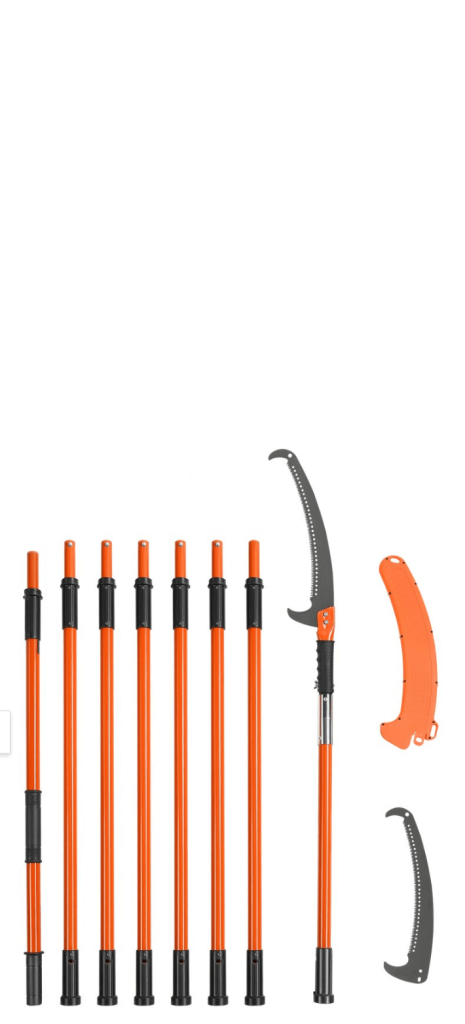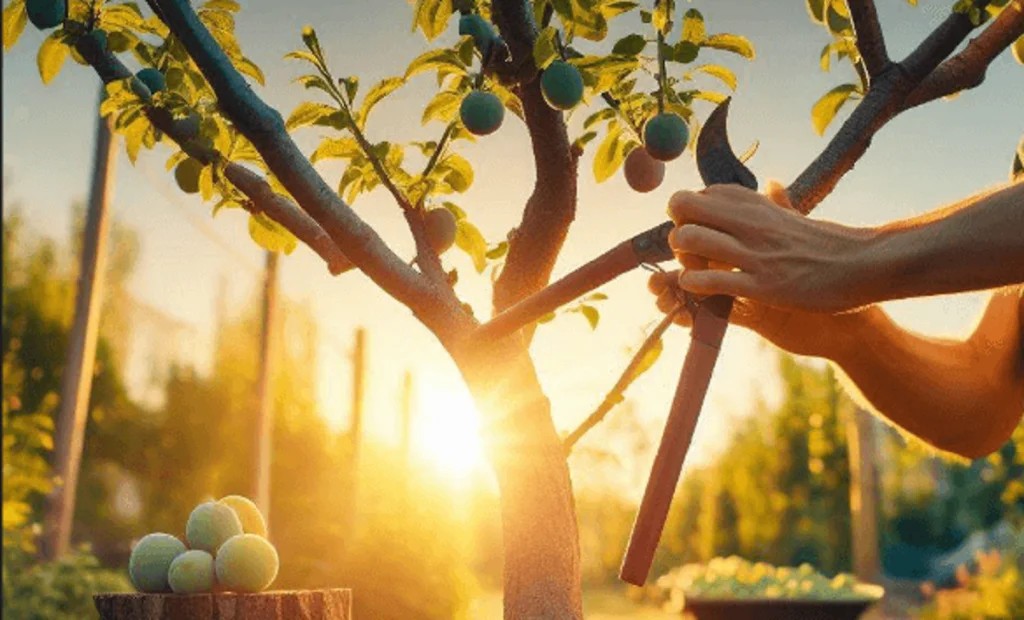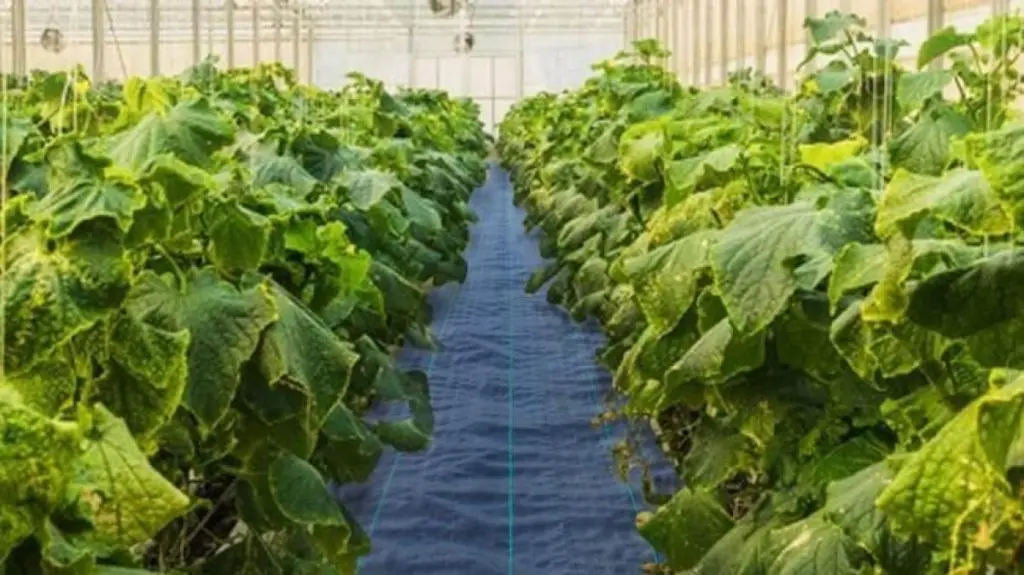Pruning plum trees is a crucial task that can significantly impact these beloved fruit-bearing plants’ health, growth, and productivity. With proper techniques and timing, you can encourage robust growth, improve fruit quality, and ensure a bountiful harvest year after year. Whether you’re a seasoned gardener or a novice enthusiast, mastering the art of pruning plum trees is essential for maximizing their potential.
This comprehensive guide will delve into the intricacies of pruning plum trees, offering expert tips and tricks from seasoned arborists and horticulturalists. From understanding the anatomy of plum trees to mastering the various pruning methods and timing, this guide aims to equip you with the knowledge and skills necessary to cultivate healthy, fruitful plum trees in your garden or orchard.
Table of contents
Understanding Plum Tree Pruning
Have you ever wondered why giving your plum tree a haircut is good? Well, it’s not just about making it look neat! Pruning your plum tree has several benefits that will keep it healthy and happy, and guess what? A happy tree means more delicious plums for you!
Benefits of Pruning
Pruning plum trees offers several benefits:
- Fruit Galore: Imagine your plum tree is an artist; the branches are its canvas. Pruning helps clear the old strokes, making room for new spurs where flowers and fruit blossom. It’s a simple way to encourage your tree to bear more fruit.
- Breath of Fresh Air: Like us, trees enjoy a good breeze. Opening up the canopy through pruning lets air flow freely, preventing moisture from overstaying its welcome—a leading cause of fungal blues.
- Disease-Free Zone: With better air comes a healthier tree. Removing sick, damaged, or just dead parts stops diseases in their tracks, keeping the rest of the tree happy and healthy.
- Stand Strong: Every branch counts. Cutting away the weaklings ensures the others can stand tall without breaking, especially under the weight of delicious plums.
When To Prune Plum Trees
The ideal timing for pruning plum trees depends on the season and the specific stage of development of the tree:
- Young Trees: For those under three, a late winter or early spring spa session sets them up with good bones—think of it as tree kindergarten, setting the stage for growth and development.
- Mature Trees: For the older and wiser, a pre-spring prune keeps them focused on fruit production. Though, a little trim here and there during the season doesn’t hurt.
Types of Plum Tree Pruning
Different pruning methods are used for plum trees, each with advantages and suitability for specific varieties. Here are some examples:
- Open-Heart: This method turns your plum tree into a vase-shaped marvel, ideal for varieties that love to spread their branches wide.
- Leading Role: Some trees do best with a central leader—think of a prominent branch skyscraper with everything else branching out.
- Fan Club: Got a wall or fence? The fan method turns your plum tree into a living art piece, perfect for those tight on space.
Essential Tools For Plum Tree Pruning

Before you become the pruning Picasso, here’s what you’ll need:
- Safety First: Don’t forget your gloves, goggles, and long sleeves. Better safe than sorry!
- Hand Pruners: Your go-to for quick snips and precision cuts on the smaller branches.
- Loppers: When branches get chunky, loppers are your best friend for a clean cut without the squish.
- The VEVOR Tree Pole Saw: Reaching the sky just got easier. This tool is a game-changer for those high-up branches, combining safety with convenience. Plus, it’s built to last and easy to handle.
Remember, each pruning session is a step toward a healthier, more fruitful plum tree, by understanding the why, when, and how, you set the stage for a garden that gives back year after year.
Step-by-Step Guide to Pruning Plum Trees with the VEVOR Tree Pole Saw
Are you getting ready to prune your plum tree? Pruning is more than just cutting branches; it’s a way to help your tree thrive by removing what holds it back. Here’s how to get started with a personal touch.
First Things First: Assess Your Tree
- Keep an Eye Out: Look at your plum tree before anything else. Look for signs that it’s not feeling its best – like leaves changing color, branches no longer bearing fruit, or any unusual spots or insects.
- Deal with Trouble: If you spot any issues, it might be time to say goodbye to those affected branches. Disposing of them adequately can keep the rest of your tree safe and healthy. Sometimes, extra care in the form of a fungicide or insecticide is needed.
Gather Your Pruning Gear
- What You’ll Need: Arm yourself with a trusty VEVOR Tree Pole Saw. Don’t forget your protective gear – gloves to keep your hands safe, goggles to protect your eyes, and long sleeves to guard against scratches.
- For the Finer Details: Having a hand pruner and loppers by your side will help with the smaller branches your pole saw can’t manage.
Starting the Pruning Process
Out with the Old
- The Clean Cut: With your VEVOR Tree Pole Saw, target the branches that aren’t doing your tree any favors anymore – the dead, diseased, or damaged ones. Remember, when making your cuts, aim just outside the branch collar to help your tree heal.
- Stay Safe: When working with the pole saw, maintain a comfortable distance and control your movements to avoid accidents.
Give Your Tree Some Breathing Room
- Why It Matters: Thinning out the dense areas of your tree isn’t just for looks; it’s about letting air and light reach everywhere they need to, helping prevent diseases and encouraging a good harvest.
- Make Smart Choices: Use your pole saw to choose which branches to remove carefully. Look for branches that are too close for comfort, awkwardly positioned, or not pulling their weight. The goal is to create an evenly-spaced, open tree structure.
Shaping Your Tree – If You Wish
- An Extra Touch: Shaping isn’t always necessary, but if you decide to go for it, remember that each plum tree variety might need a different approach. If you need more clarification, it’s always a good idea to seek advice from a professional arborist.
After the Pruning
Clean-Up Time
- Tidy Up: Once you’ve finished pruning, clear away all the cuttings from around your tree. This helps keep your garden neat and stops any diseases from spreading.
Optional Steps
- Sealant for Large Cuts: You apply a pruning sealant for the more significant cuts. This can help protect the open wounds on your tree from disease. But remember, it’s only sometimes necessary.
- Take Care of Your Tree: Pruning can significantly change your tree. Keep an eye on its health, and remember to water it, helping it recover and grow stronger.
Pruning your plum tree is about giving it the care and attention it needs to flourish. With the right approach and a little love, you can help your tree produce beautiful fruit season after season.
Additional Tips for Successful Plum Tree Pruning
Are you starting your pruning adventure? We all have been there, too. The key is to take it slow. Rushing through the process with many cuts might speed things up, but a little goes a long way. Your plum tree will be able to heal more effectively and will be under less stress if you make just a few carefully considered cuts.
Making Your Cuts Count
It’s all about the clean cuts. They not only heal quicker but also give your garden a neater appearance. Keep those pruning shears sharp! And here’s a little trick I learned – make your cuts at a 45-degree angle just above a bud facing outwards. It nudges the tree to grow in the direction you want. It’s pretty neat, right?
Keeping Diseases at Bay
Here’s a simple yet effective tip – disinfect your tools. A bit of bleach mixed with water does the trick. It’s especially crucial when moving from tackling a diseased tree to a healthy one. This step helps keep those nasty diseases from spreading and keeps your garden happy and healthy.
Knowing When to Call for Help
And hey, we all need a bit of help sometimes. If you have a mature tree or feel unsure, it might be time to call a professional. Arborists are like tree doctors – they know what your tree needs to flourish. Don’t hesitate to reach out for expert advice.
Troubleshooting Tree Concerns
Fruit Production Woes
Is your tree not bearing fruit? Consider these adjustments:
- Prune Regularly: Pruning stimulates growth. Overgrown branches can stifle fruit production.
- Ensure Adequate Sunlight: Plum trees flourish under full sunlight. If your tree is too shaded, it might not fruit well.
- Check Pollination Needs: Some plums need a friend! Certain varieties require cross-pollination, so having another compatible plum tree nearby could solve your fruiting issue.
Why Are My Branches Drooping?
If your tree’s branches look a bit sad, here’s what might be happening:
- Health Check: Diseases can weaken branches. Look for symptoms and treat them accordingly.
- Water Wisely: Too much water can harm your tree. Ensure your watering routine promotes healthy root growth.
- Sunlight Matters: Like fruiting, insufficient sunlight can lead to weaker branches.
Oops, I Made a Big Cut!
Accidentally pruning too much? Here’s how to mend the situation:
- Use Pruning Sealant: A sealant can prevent disease and aid recovery for cuts larger than an inch.
- Monitor and Care: Keep an eye on the tree’s health, ensuring it gets enough water and nutrients.
Caring for a plum tree involves patience, precision, and a bit of love. Whether you’re mastering pruning or solving growth issues, remember that every gardener learns as they grow. And for those moments of uncertainty, don’t hesitate to seek advice from a certified arborist who can guide you toward lush, fruitful seasons ahead.
FAQs about Pruning Plum Trees
When is the ideal time to trim plum trees?
Deciding when to prune your plum trees is all about understanding their needs at different stages:
- For the younger ones (those under the tender age of 3), it’s best to get out those pruning shears in late winter or early spring, right before the tree breaks into its growth spurt. This timing is perfect for shaping up a robust framework of branches.
- For the mature crowd (those already bearing fruit), you’ll want to stick to the late winter or early spring schedule for significant pruning. This helps set the stage for a bountiful harvest. Though, if you notice any stray suckers or water sprouts during the season, feel free to trim these away.
How regularly should you prune plum trees?
- Young saplings benefit from a yearly trim to help them grow strong and structured.
- Fruiting trees also enjoy an annual prune to keep them healthy and productive. Just remember, the amount of cutting back might differ based on how the tree is doing and the amount of fruit you’re hoping to harvest.
What should you steer clear of when pruning?
Here’s a little pruning etiquette to keep in mind:
- Timing is everything: Try to avoid pruning in late summer or fall. This could lead to late growth that doesn’t stand a chance against the winter cold.
- Less is more: Stay moderate with the trimming. Too much can stress out the tree and lead to fewer fruits.
- It’s all in the technique: Make sure your tools are sharp and your cuts are clean. Rough cuts could harm the tree and lead to disease.
- Keep it clean: Remember to disinfect your tools, especially when moving between different trees. You wouldn’t want to spread any diseases.
How do you look after your plum tree post-pruning?
After giving your tree a good trim, here’s how you can help it bounce back:
- Clear away any trimmings from around the tree base.
- Use pruning sealant on cuts wider than 1 inch to fend off disease.
- Make sure your tree gets enough water, especially if the weather is dry.
- Keep an eye on your tree for any signs of disease or pests, and tackle any issues promptly.
What’s the best pruning approach for a fruitful harvest?
Encouraging fruit production with pruning depends on your tree’s age and type. Here are a few guidelines:
- Youngsters: Work on establishing a robust central leader and scaffold branches. This sets up a solid base for future fruiting.
- Older trees: Focus on clearing out any deadwood or overcrowded branches. This helps with airflow and lets more light in, essential for fruit development. Always aim for clean cuts at just the right angle.
Key Takeaways
Tending to your plum trees can be incredibly satisfying, especially when you notice the trees flourishing and the fruit harvest becoming more generous year after year. A reliable tool like the VEVOR tree pole saw can make all the difference when you venture into pruning confidently. This tool makes the task manageable and enjoyable, guiding you as you shape your plum trees for better growth and more fruitful outcomes.
The strength and thoughtful design of the VEVOR Tree Pole Saw, combined with its extended reach, position it as the perfect companion for keeping plum trees of every size in top condition. Whether your goal is to clear away dead branches, alleviate the burden of an overly dense canopy, or maintain the tree’s shape, this saw offers the precision and ease needed for such detailed work.
It’s easy to underestimate the impact of regular pruning, but your plum trees shouldn’t take advantage of the care they deserve. Choosing the VEVOR Tree Pole Saw as your partner in this gardening venture is a step towards refining your pruning technique. As a result, your plum trees will look better and reward you with a bounty of fruit for many seasons to come.





